"One morning, Theodore G. Williford woke from uneasy dreams to find himself... not quite right."
This is not the original opening line of Franz Kafka's The Metamorphosis, but the core of absurdity, alienation, and loss of identity it implies is exactly in tune with that great literary work. And this is precisely the story that a deck of playing cards—The Beetle Backs—aims to tell.
Initiated by The Gentleman Wake (TGW) and designed by Widakk Design, this deck has long transcended the scope of ordinary playing cards. It is a carefully orchestrated narrative experiment, combining late 19th-century vintage aesthetics with a profound fable, inviting every user to become an interpreter of the story.
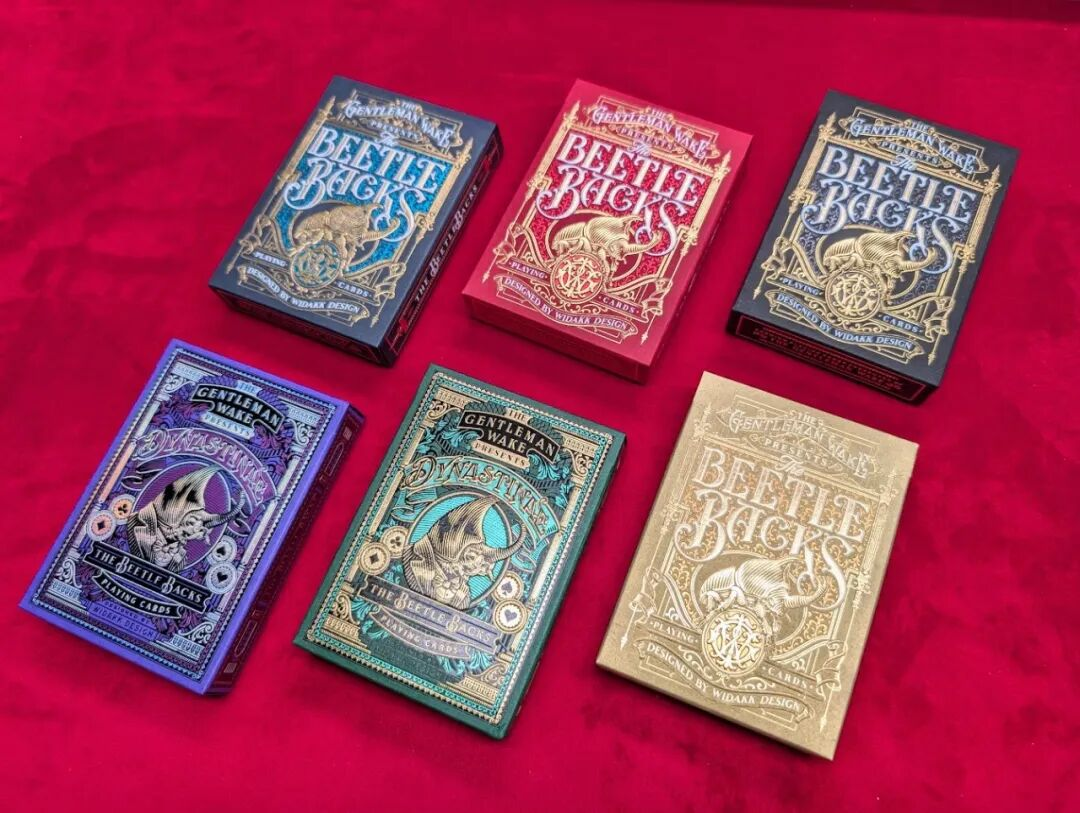
The Metamorphosis in Cards: A Fable of Transformation with a Divergent Path
The soul of The Beetle Backs is a profound homage to, and a bold reimagining of, The Metamorphosis.
The protagonist, entomologist Theodore, becomes so obsessed with his research on Rhinoceros Beetles that he eventually finds himself transforming into the very object of his study. This forms a brilliant intertextual relationship with Gregor Samsa, who transforms into a beetle due to the unbearable burden of family and work. Both stories begin on an absurd morning where the protagonist, under extreme pressure or obsession, gradually loses their "human" identity and undergoes "objectification" or "insectification." However, their endings are diametrically opposed.
Kafka’s Gregor undergoes a transformation that is a tragedy through and through. He loses his job, loses his language, is viewed as a burden and a shame by his family, and ultimately dies in loneliness and despair. His "insectification" is a complete loss of social function—a process of being thoroughly stripped away and abandoned by family and society. His death ultimately "enables" his family's rebirth.
However, Theodore's story takes a different path. His transformation, born of an extreme obsession with research, is more like a grotesque "sublimation." He does not lose everything; instead, he merges his passion with his physical form, becoming the embodiment of what he obsesses over. This is not a story about "loss," but a story about "becoming"—finding ultimate self-identity within the grotesque.
This narrative difference makes the core of The Beetle Backs more complex. It is no longer just a dirge for social alienation, but adds a touch of dark fantasy, exploring the question: when a person's career and passion consume them, is it destruction or immortality? The four Aces delicately depict this process of transformation.

Dual Concerto: Two Back Designs, Two Flavors
Upon closer inspection, The Beetle Backs does not rely on a single design language but presents two distinct visual styles. The two core back designs both employ exquisite symmetrical composition, yet they tell the story in very different ways, representing two layers of the narrative: the figurative scene and the abstract symbol.
Design 1: The Narrative Scene (Standard / Prestige / Legend Editions)
This back design depicts a complete narrative scene. The beetle-fied Theodore is not banished by society but sits peacefully on the sofa in his own study. In the background, a phonograph, a globe, and insect specimens on the wall all hint at his past as a scholar. At this moment, he is carefully examining a playing card in his hand. This image reveals a grotesque state of harmonious coexistence with his own alienation; there is no intense dramatic conflict, but rather a calm, immersive self-examination. It freezes the story in a specific moment, full of detail and room for imagination.

Design 2: Decorative Symbol (Dynastinae / Prism Series)
The other design steps outside the figurative narrative. It depicts no specific scene, returning instead to purer decorative art. The core of the pattern is the brand owner "The Gentleman Wake's" TGW monogram, guarded on both sides by highly stylized Rhinoceros Beetle elements. The entire design language resembles a classical crest or ornate wallpaper, emphasizing a sense of form and order. It fuses the story's core element (the beetle) with the brand identity (TGW).
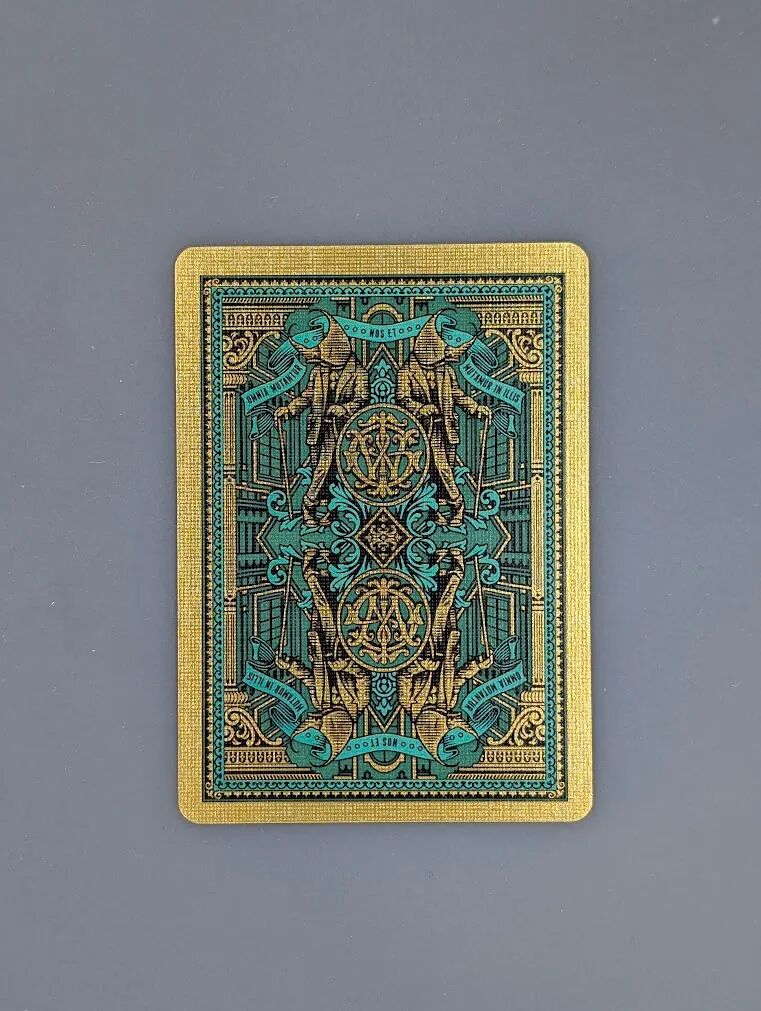
Exquisite Details: Unity of Design and Utility
Beyond the grand narrative and dual designs, The Beetle Backs excels in its portrayal of details.
Court Cards: Within the classic character figures, elements of the Rhinoceros Beetle are cleverly hidden (such as on collars or scepter decorations), waiting for the player's keen eye to discover them. Every close look yields a new surprise.
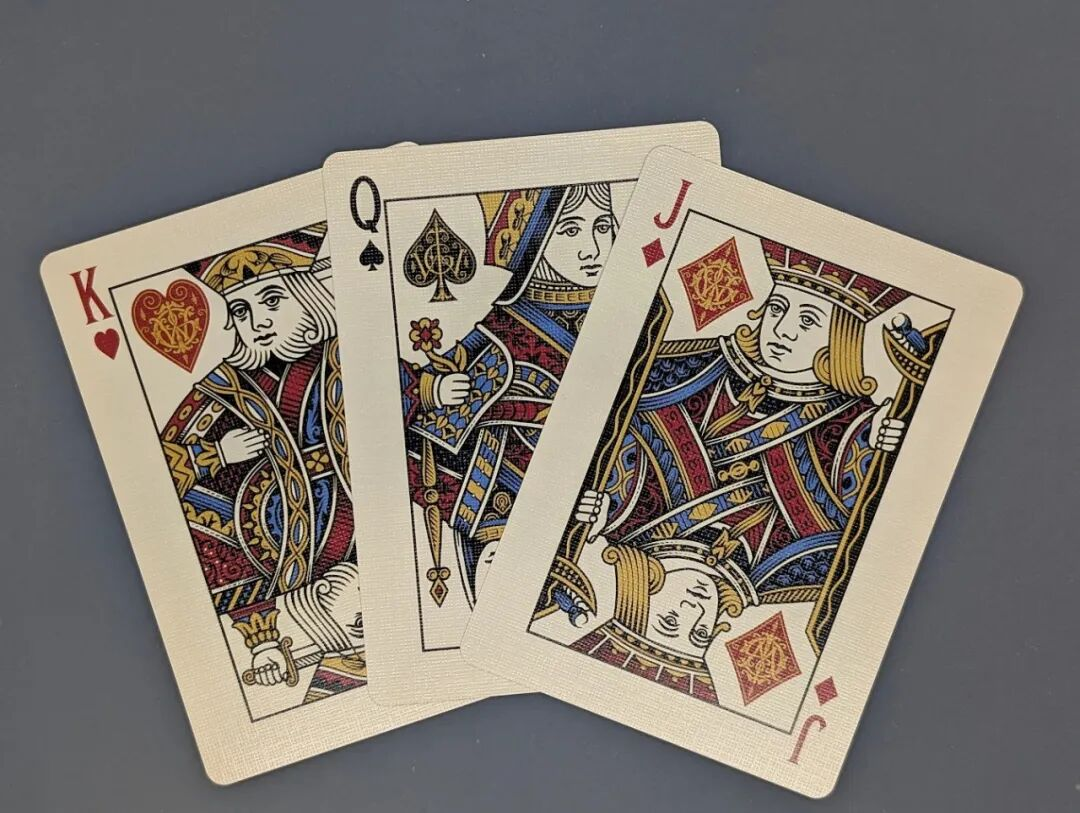
The Joker: A tribute to the classic Bicycle 808 Joker, but the rider has been swapped for the already-transformed Theodore. He rides a vintage bicycle through classical architecture, composing a scene that is absurd, humorous, and slightly poignant.
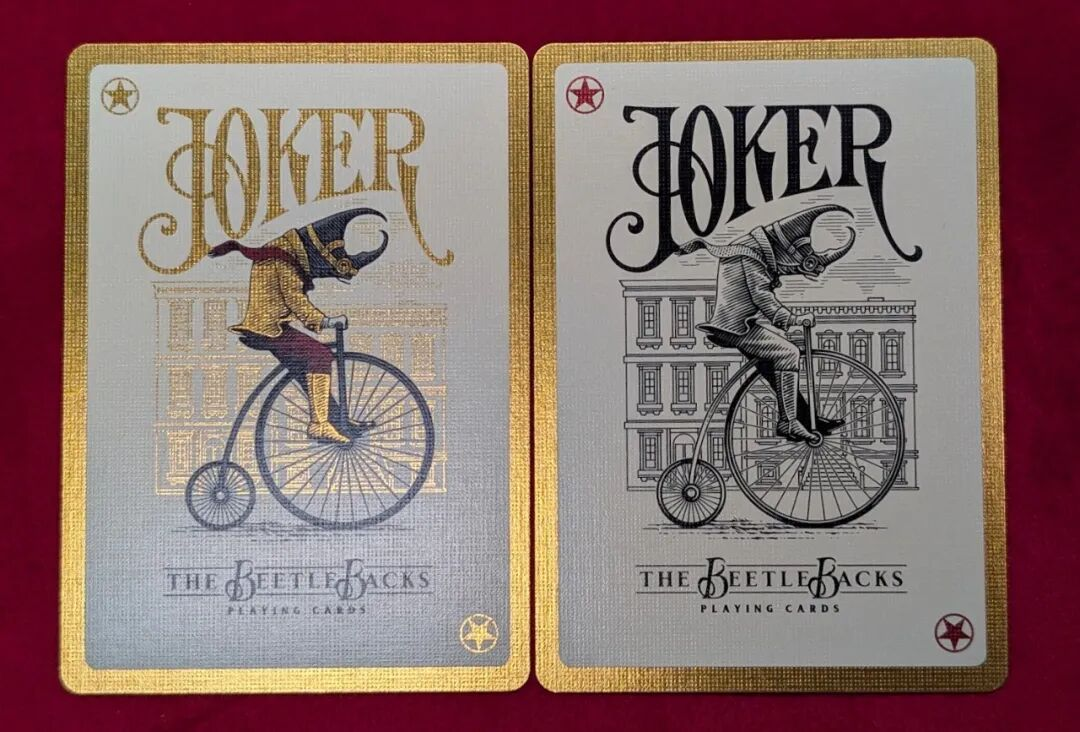
Vintage Tone: The entire deck eschews glaring pure white, uniformly adopting a warm Eggshell color as the background, giving the cards a texture steeped in the passage of time.
In addition to artistic refinement, The Beetle Backs buries several surprises for magic enthusiasts and performers, fulfilling its crowdfunding promise as a deck suitable for magicians, players, and collectors alike. The entire deck comes arranged in the classic Mnemonica stack right out of the box, saving the tedious sorting process so you can perform immediately upon opening.
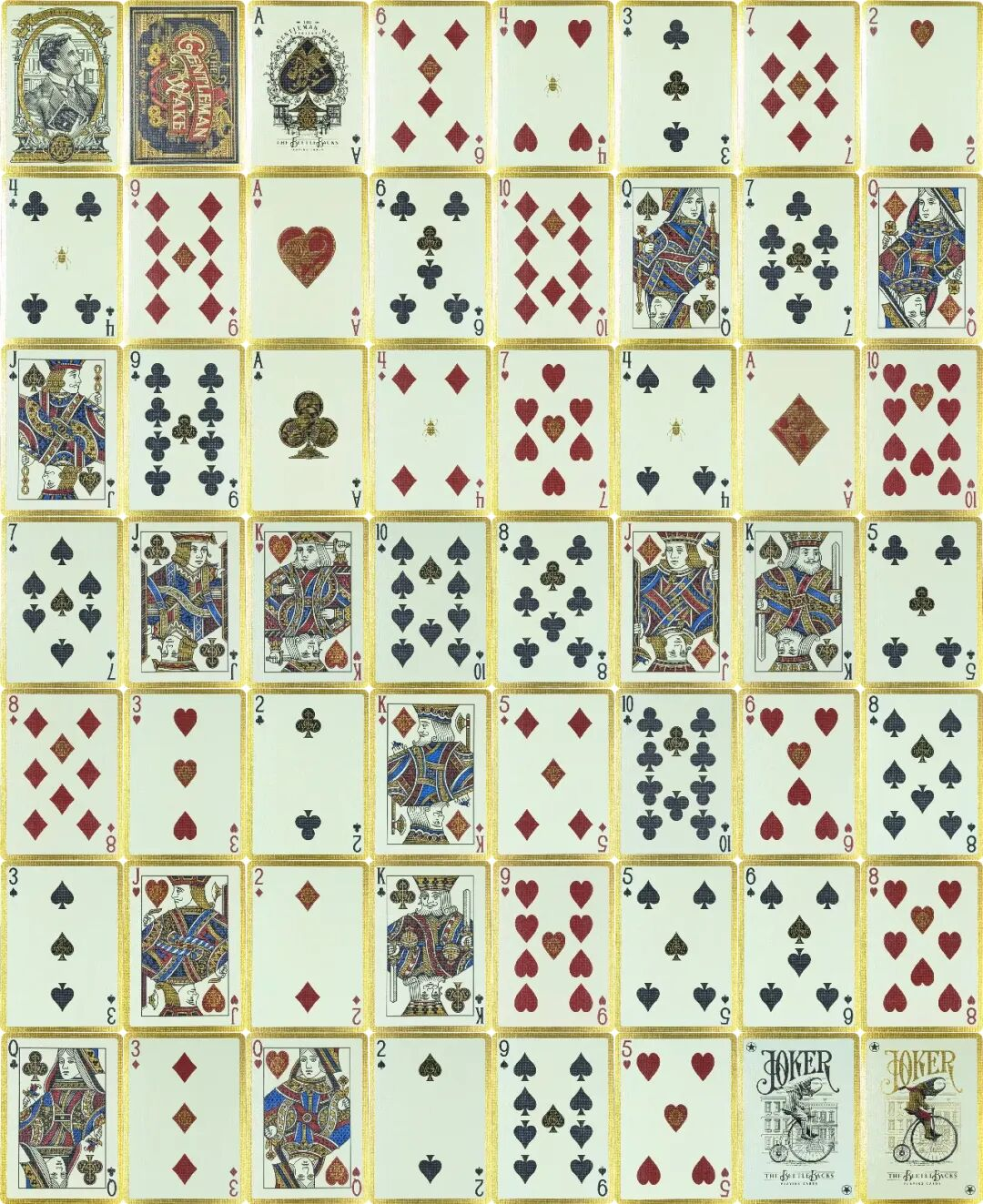
On the top of the tuck box, a reveal for the 2 of Clubs is cleverly hidden.
Many cards with full-bleed foil backs suffer from a common issue: when a card is reversed and inserted into the deck, the lack of a corresponding foil border on the face makes it immediately visible from the side. The Beetle Backs added a cold foil border to the faces as well. This not only elevates the overall texture but also solves this problem, ensuring visual uniformity on the side of the deck, allowing for magic tricks that require strict white borders (though there is a very slight color difference, it does not significantly affect performance).
Slight Flaws: A Tiny Regret
However, even such an exquisite work has a minor regret. The packaging used an inner plastic film with a tear strip, which left permanent pressure marks on the gilded edges. While this does not affect handling, for a collectible item, it is ultimately a flaw in an otherwise perfect jade.
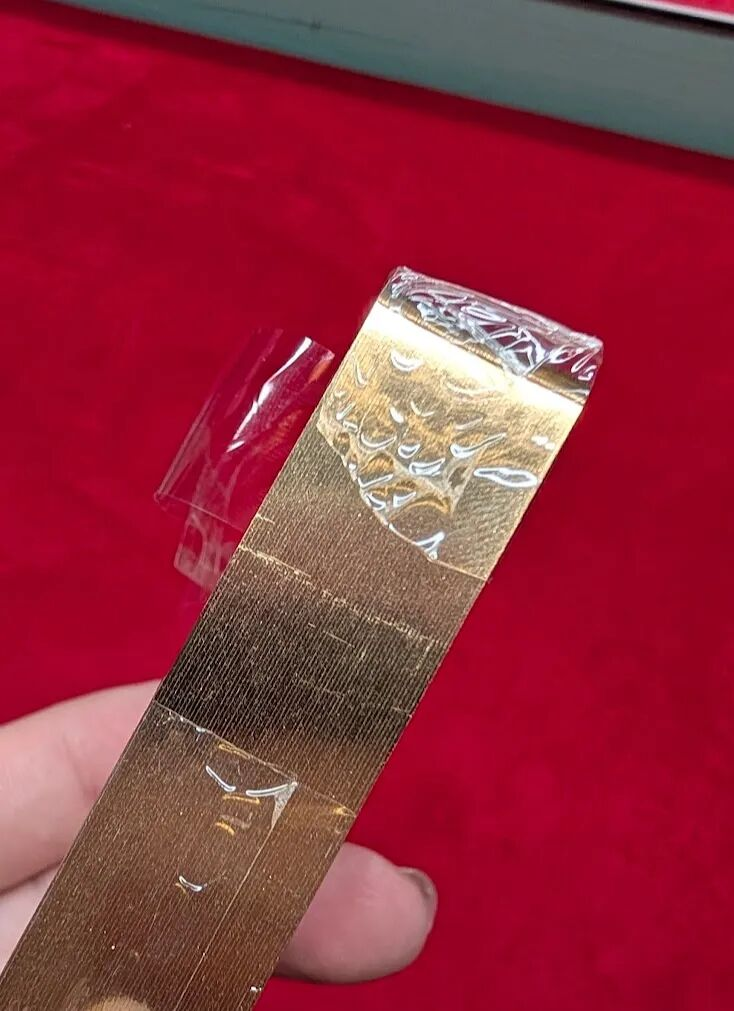
Additionally, the numbered seals originally promised to be affixed to the bottom of the box were not delivered. This also discounts the collectible nature of the deck to some extent.
Behind the Scenes: A Two-Year Wait Worth the Trouble
While appreciating the ingenious design of this deck, its birth was an adventure filled with accidents. The project was originally planned to be printed by Cartamundi, but they suddenly cancelled their custom deck business across the board, catching TGW off guard.
After several twists and turns, the team turned to WJPC for production, but issues during collaboration caused repeated delays in the printing schedule. When the cards were finally printed and shipped to the US, a communication error caused the entire bulk shipment to be sent directly to Omar's (TGW) home instead of the warehouse responsible for fulfillment. This forced Omar to personally shoulder high postage costs to forward tons of playing cards.
It is precisely because of this series of mishaps that by the time this deck finally reached my hands, nearly two years had passed. this long wait makes every touch and appreciation of it even more precious.
The greatest success of The Beetle Backs lies in proving the depth a deck of cards can carry. It is not just a beautifully designed product, but a micro-novel you can hold in your hand, as well as a handy tool for magic.
Through a Kafkaesque fable, it guides us to think about grand themes of obsession, work, identity, and alienation. When you spread these 56 cards, what you see is not just suits and numbers, but the entire process of a soul alienating within obsession, and ultimately coexisting grotesquely with another self.